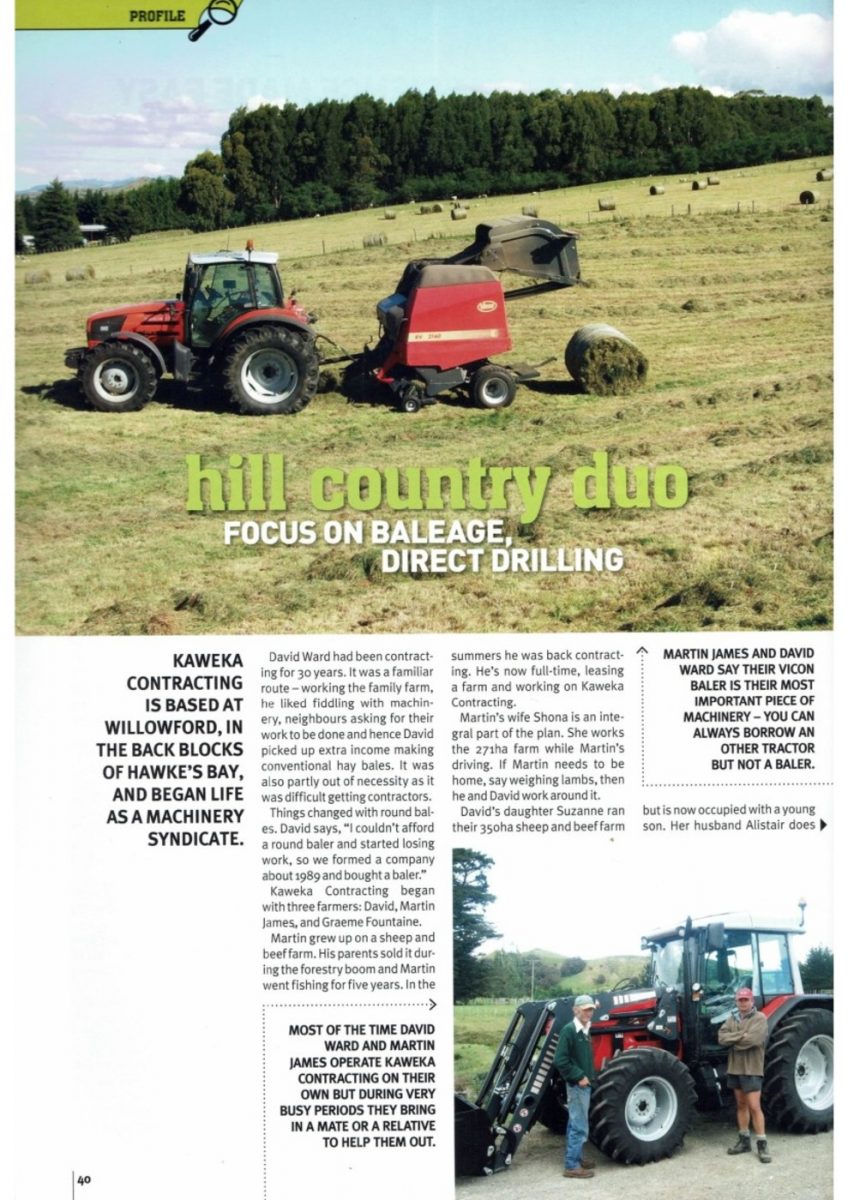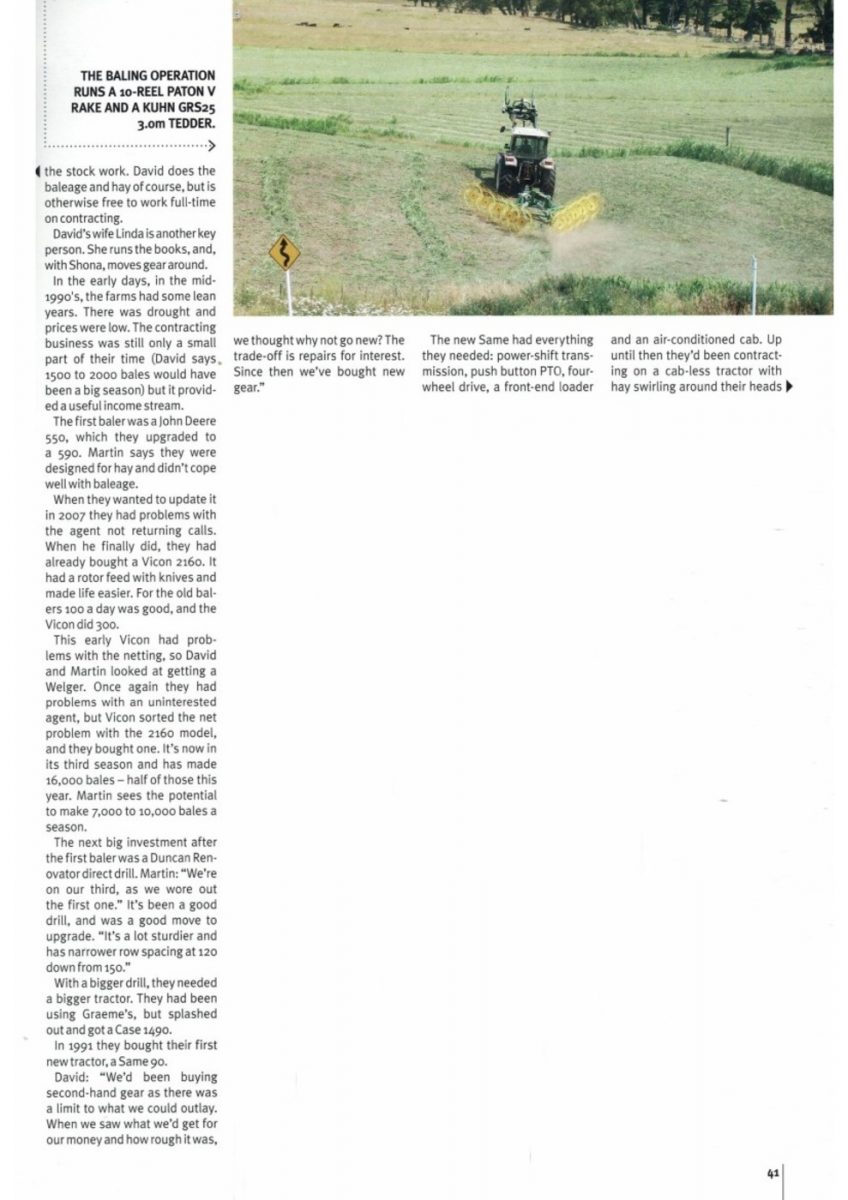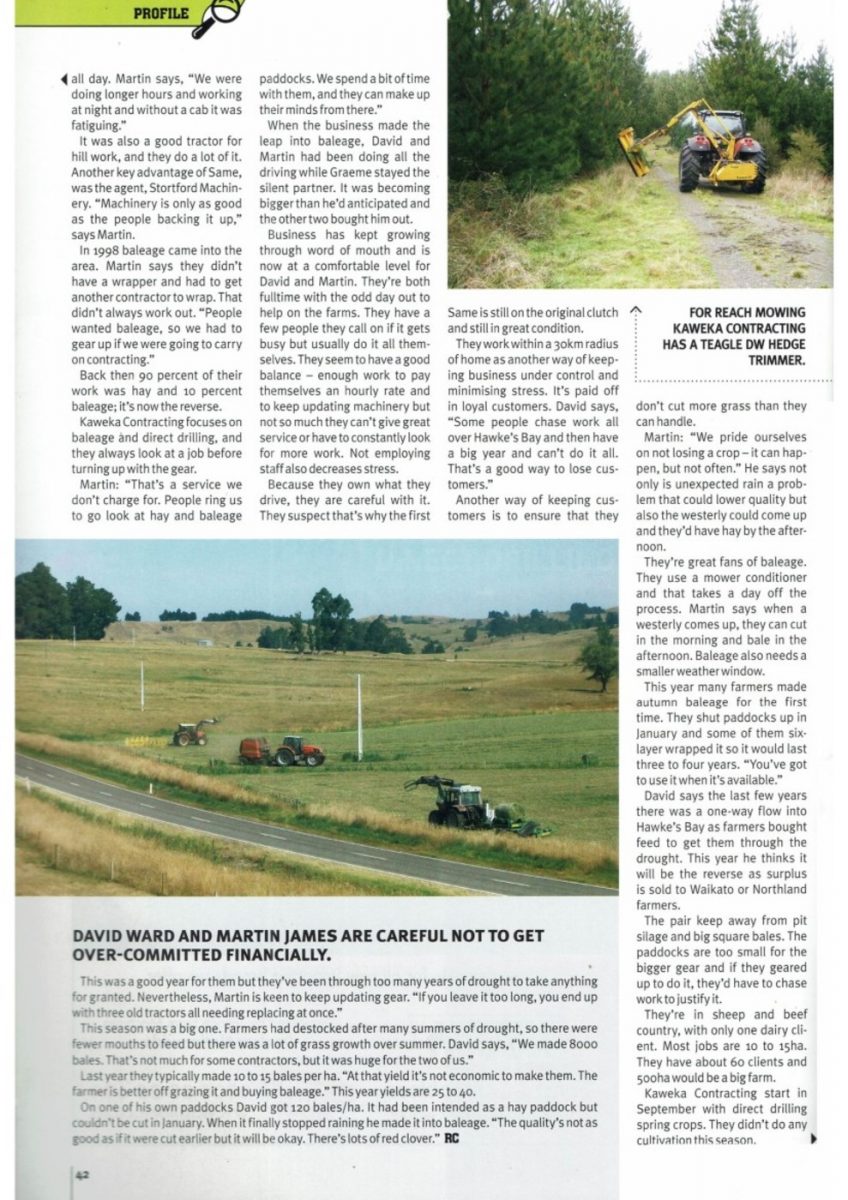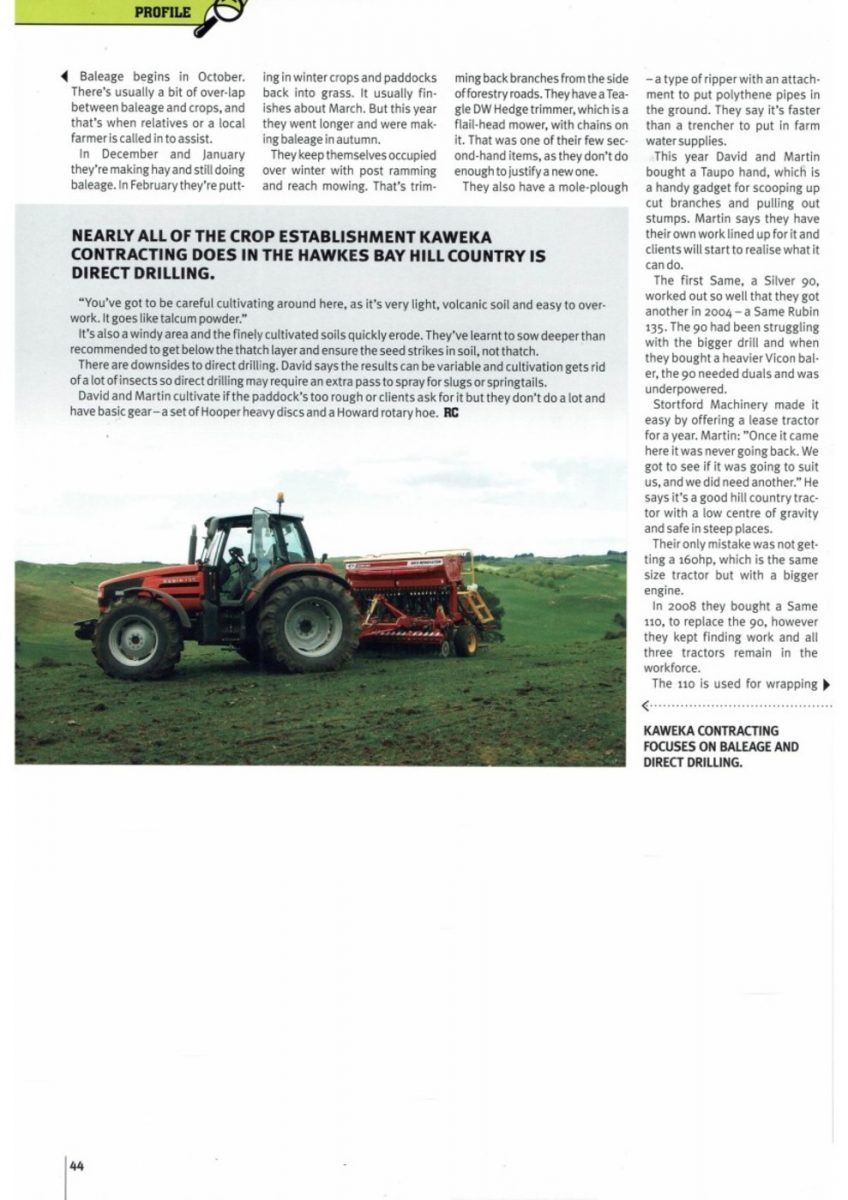Page 42
PROFILE
all day. Martin says, “We were doing longer hours and working at night and without a cab it was fatiguing.”
It was also a good tractor for hill work, and they do a lot of it. Another key advantage of Same, was the agent, Stortford Machinery. “Machinery is only as good as the people backing it up,” says Martin.
In 1998 baleage came into the area. Martin says they didn’t have a wrapper and had to get another contractor to wrap. That didn’t always work out. “People wanted baleage, so we had to gear up if we were going to carry on contracting.”
Back then 90 percent of their work was hay and 10 percent baleage; it’s now the reverse.
Kaweka Contracting focuses on baleage and direct drilling, and they always look at a job before turning up with the gear.
Martin: “That’s a service we don’t charge for. People ring us to go look at hay and baleage paddocks. We spend a bit of time with them, and they can make up their minds from there.”
When the business made the leap into baleage, David and Martin had been doing all the driving while Graeme stayed the silent partner. It was becoming bigger than he’d anticipated and the other two bought him out.
Business has kept growing through word of mouth and is now at a comfortable level for David and Martin. They’re both fulltime with the odd day out to help on the farms. They have a few people they call on if it gets busy but usually do it all themselves. They seem to have a good balance – enough work to pay themselves an hourly rate and to keep updating machinery but not so much they can’t give great service or have to constantly look for more work. Not employing staff also decreases stress.
Because they own what they drive, they are careful with it. They suspect that’s why the first Same is still on the original clutch and still in great condition.
They work within a 30km radius of home as another way of keeping business under control and minimising stress. It’s paid off in loyal customers. David says, “Some people chase work all over Hawke’s Bay and then have a big year and can’t do it all. That’s a good way to lose customers.”
Another way of keeping customers is to ensure that they don’t cut more grass than they can handle.
Martin: “We pride ourselves on not losing a crop – it can happen, but not often.” He says not only is unexpected rain a problem that could lower quality but also the westerly could come up and they’d have hay by the afternoon.
They’re great fans of baleage. They use a mower conditioner and that takes a day off the process. Martin says when a westerly comes up, they can cut in the morning and bale in the afternoon. Baleage also needs a smaller weather window.
This year many farmers made autumn baleage for the first time. They shut paddocks up in January and some of them six-layer wrapped it so it would last three to four years. “You’ve got to use it when it’s available.”
David says the last few years there was a one-way flow into Hawke’s Bay as farmers bought feed to get them through the drought. This year he thinks it will be the reverse as surplus is sold to Waikato or Northland farmers.
The pair keep away from pit silage and big square bales. The paddocks are too small for the bigger gear and if they geared up to do it, they’d have to chase work to justify it.
They’re in sheep and beef country, with only one dairy client. Most jobs are 10 to 15ha. They have about 60 clients and 500ha would be a big farm.
Kaweka Contracting start in September with direct drilling spring crops. They didn’t do any cultivation this season.
DAVID WARD AND MARTIN JAMES ARE CAREFUL NOT TO GET OVER-COMMITTED FINANCIALLY.
This was a good year for them but they’ve been through too many years of drought to take anything for granted. Nevertheless, Martin is keen to keep updating gear. “If you leave it too long, you end up with three old tractors all needing replacing at once.”
This season was a big one. Farmers had destocked after many summers of drought, so there were fewer mouths to feed but there was a lot of grass growth over summer. David says, “We made 8000 bales. That’s not much for some contractors, but it was huge for the two of us.”
Last year they typically made 10 to 15 bales per ha. “At that yield it’s not economic to make them. The farmer is better off grazing it and buying baleage.” This year yields are 25 to 40.
On one of his own paddocks David got 120 bales/ha. It had been intended as a hay paddock but couldn’t be cut in January. When it finally stopped raining he made it into baleage. “The quality’s not as as if it were cut earlier but it will be okay. There’s lots of red clover.” RC
Photo caption – FOR REACH MOWING KAWEKA CONTRACTING HAS A TEAGLE DW HEDGE TRIMMER.
















Do you know something about this record?
Please note we cannot verify the accuracy of any information posted by the community.